The first day in Quanzhou has not disappointed. A tasty snack and a shot of culture in XiJie, followed by the great cultural emporium of Buddhist Kaiyuan Monastery. But I put forward Quanzhou as a destination because of the chance to pay respects to Laozi, the hero of legend who inspired the series that gave me the reason to talk about something. As our second morning dawned, we set off from the hotel to Qingyuan Mountain.
Let me be up front. Qingyuan Mountain is huge. In both scale and significance. This is another 5A-designated tourist site. Qingyuan shares this 5A ranking with the Forbidden City, the mausoleum of Genghis Khan, West Lake, and lets never forget the granddaddy of prestigious projects, the Dujiangyan Irrigation of the Minjiang River.
Yeah. Qingyuan is a big deal.
About the size of the park, at 62 square kilometers, don’t think for a minute that we hiked over even five percent in a morning. We came to see the granite statue of Laozi, marked by the red path on the map below. The small red loop bottom center. That was more than enough for a long morning.
So conscientiously, so Daoist, the main attraction is not far to walk and the path is suited to all ages. One need not go far, he waits patiently a few minutes up the path. Gentle steps wind through leafy trees, with a railing-ready planked path alongside. On this early Tuesday morning, there were no more than a few dozen visitors in the entire park. From what we saw, we joked that we were lowering the average visitor age.
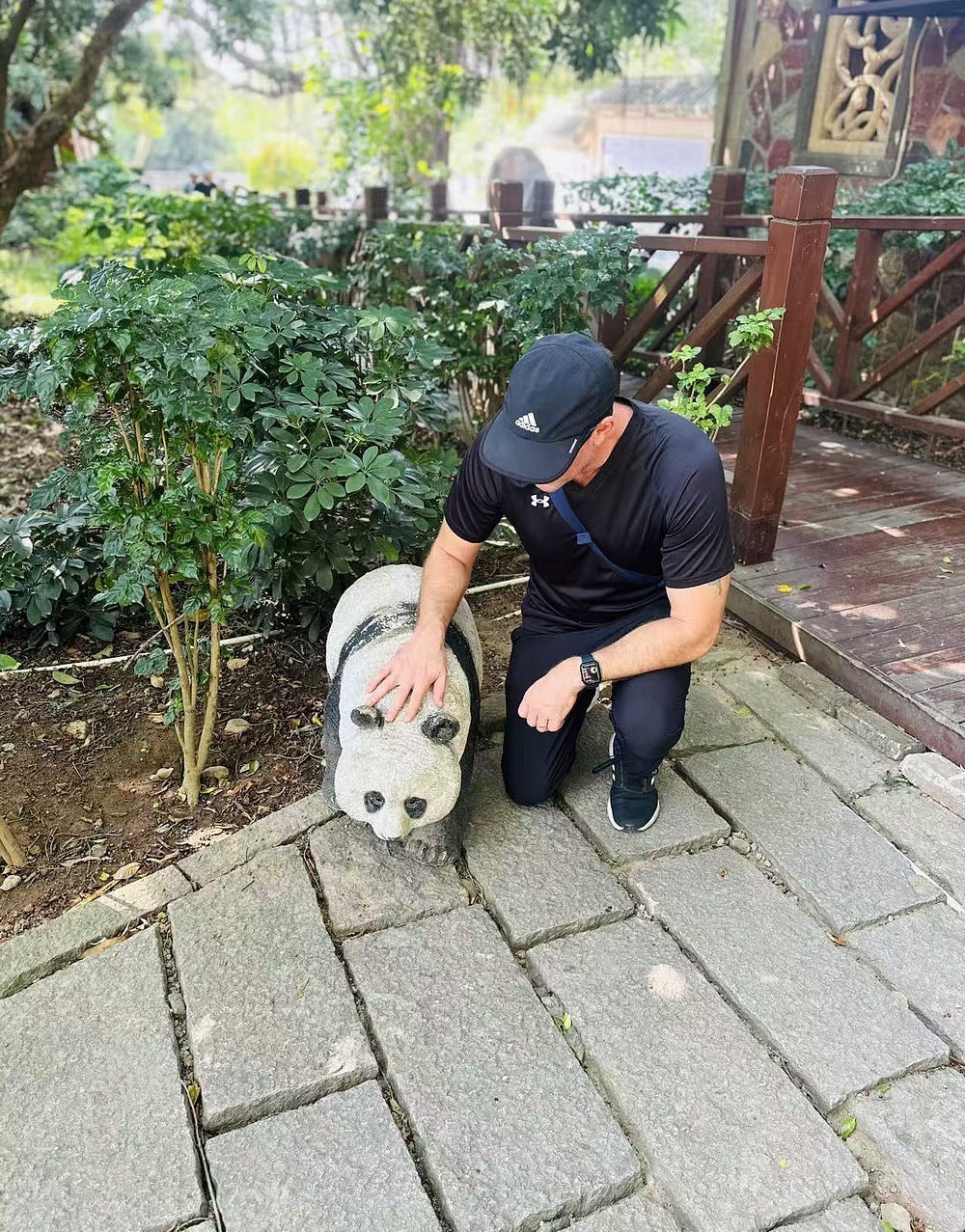
I’ve written twice (here and here) about the famous and consequential meetings between Confucius and Laozi. The Daoists have a lot to say about these meet-cutes, always with emphasis that Confucius was going to see Laozi. Because he was seeking guidance and advice, you see. The Confucianists seem to place less emphasis on the encounters. It’s not a competition, you see. Honestly, there may be nothing more endearing to me about Chinese schools of philosophy than their cattiness towards each other.
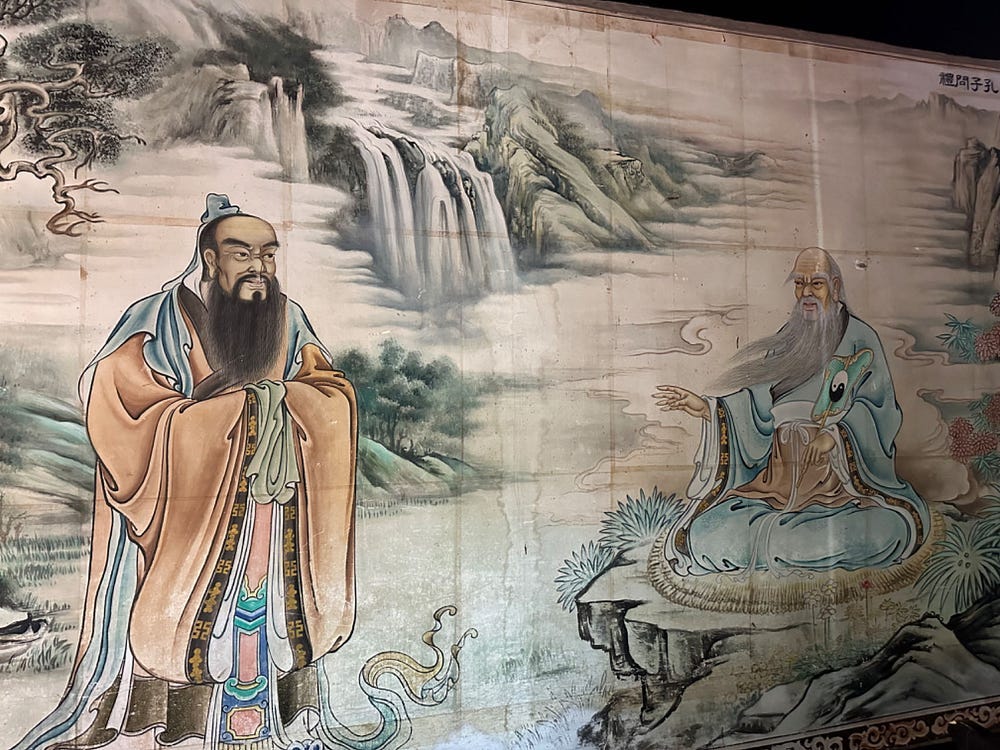
So what a treat for me to get to sit in on one of their famous meetings! Here they were, just sitting on the side of the path as calm as you would like. A few scrolls on the table in case they needed to look anything up. Frozen in mid-gesture, as if each was about speak and paused for the other. You first, I insist. No, after you…and so on.
I recognize Confucius from descriptions in Linyutang’s biography. Confucius is always depicted as a tall and big-boned man, described as “nine feet, six inches”. This is not an error, the unit of measure was much shorter at that time, but we know he was tall. He is not called handsome, but his warm personality and keen wit was attractive to all who knew him.
Laozi is shown here equal in size to Confucius and sitting slightly elevated. Remember whose mountain this is! He is also easily recognized. A kindly man of advanced age with a serene expression. Either Laozi is depicted with immortal features, or immortals took their inspiration from him. Long, flowing, wispy beards, exaggerated eyebrows, and if all that hair is white, you’re an immortal for sure.
A couple of meters up the path, another surprise that online research completely missed mentioning! Eighteen engraved granite boulders, arranged on each side of the path, in a semi-circle, nine on each side, the actual text, every character, of The Daodejing. Because this text should be available to all, regardless of belief, status, or means.
You can see on the upper right hand corner of the furthest stone to the right, 老子, Laozi, or The Daodejing. Remember, old style reading was top to bottom, right to left. Depending on the version, and there are many even in Chinese, the Daodejing may contain anywhere from 5162 to 5450 characters. Later versions may have added the chapter numbers, and the order of the concepts have certainly moved around with time. Seeing the complete text all in one place is a reminder of how brief this document, a short book, really is.
And then, there he is. The cul-de-sac ends in a bowl that seems to focus on the carved boulder. This is no delicate image, but a squat, broad strokes interpretation of the essence of Laozi. Sitting in flowing robes, so relaxed and at ease. The eminent beard and eyebrows of the immortal. The bulging forehead and hanging earlobes of an advanced thinker. He commands the valley with nothing more than his presence.
This granite statue, carved from a single boulder, measures eight meters by seven meters, just shy of six meters tall. This Song Dynasty (960–1279) work of art is one of hundreds of stone carvings and structures that have been collecting here since the time of the Qin (221–206BCE).
Made from a single stone, I believe this boulder was always here and carved in place. Qingyuan was an important spiritual site for 1000 years before the decision to add Laozi. I want to know about the decision process. Was there competition? What were the other proposals, who made them, and how was the decision made? That’s the inside story I don’t think we will ever know.
Do you remember Chapter 12?
“The five colors blind a person’s eyes. The five musical notes deafen a person’s ears. The five flavors dull a person’s tastes. Horseracing and hunting madden a person’s mind. Rare treasures make a person do bad things. That is why the sage cares about his belly, not his eyes. And that is why he keeps one and rejects the other.”
It is said that the carving style reflects Laozi’s harmony with nature. His eyes are closed to the colors, his ears deaf to the noise. He sits in perfect repose, unbothered and unaffected by the madness of man.
The stone inscription says, “Laozi is Number One in the World.”
Well, of course he is, but in typical Daoist fashion I’ve come to expect and look for, there is layered subtlety and humor behind a bold statement. Of the two interpretations, think of the first as “Laozi is The Man!” For the second, one needs to recall that Laozi, 老子, means “old man”, or “old teacher”. A person could refer to themselves as a respected, experienced, and superior teacher, a 老子. Think of it as a humble brag. 😉😂
Why am I pointing one finger up, one down? Because I saw Laozi doing it, of course! This image of a Laozi statue at Laoshan (aroung Qingdao, Shandong Province) was also at the site. As Oscar Wilde said, “Imitation is the sincerest form of flattery that mediocrity can pay to greatness.”
We could spend days hiking in and around the Qingyuan Hills. The Heavenly Lake of Qingyuan, the Mitou Temple, a reclining Buddha, Islamic Holy Tombs, 600 stone inscriptions, and so on and on. We could be writing here for months. We plan to return to Mount Qingyuan in 2025 with our boys. I hope they are ready for more hiking. 😏

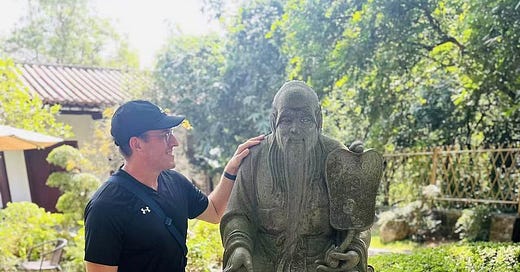



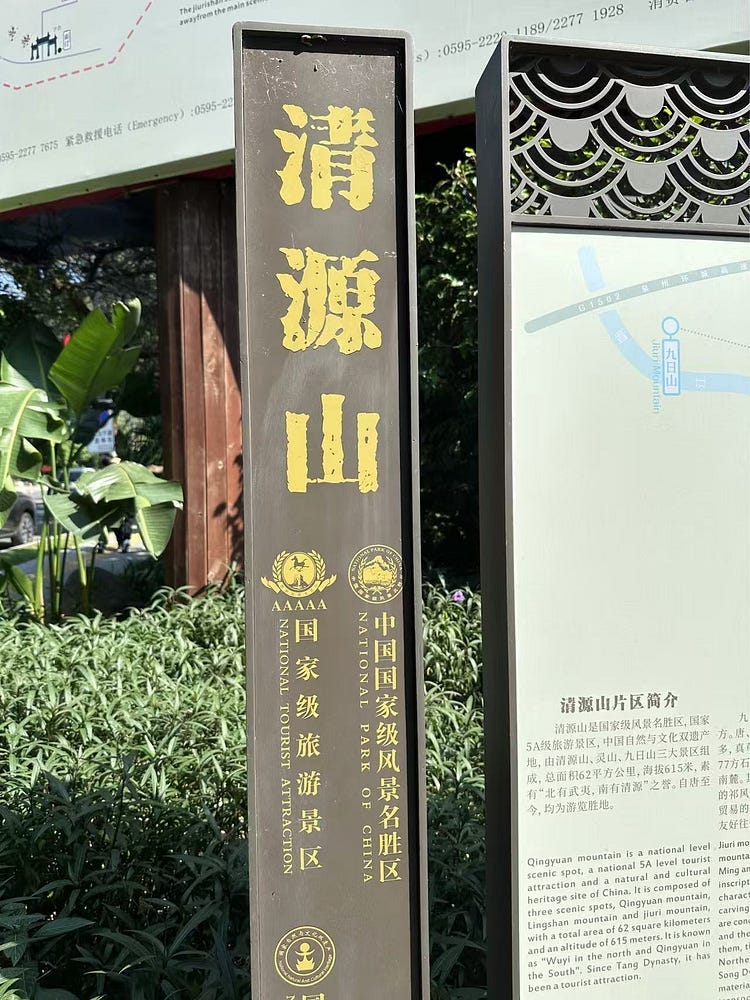
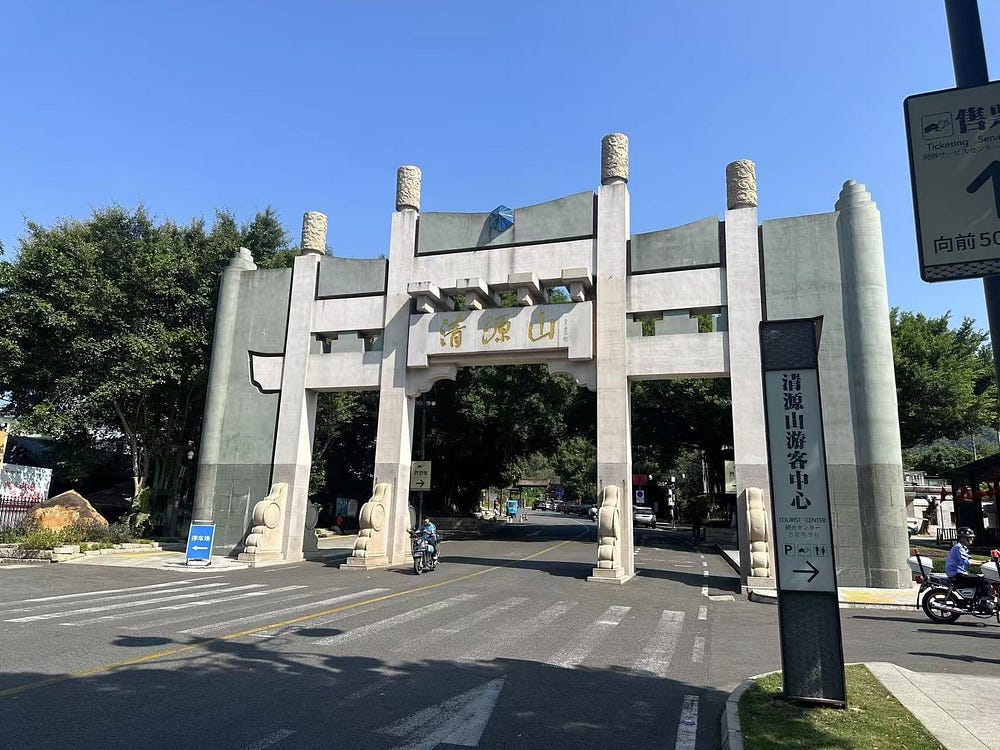
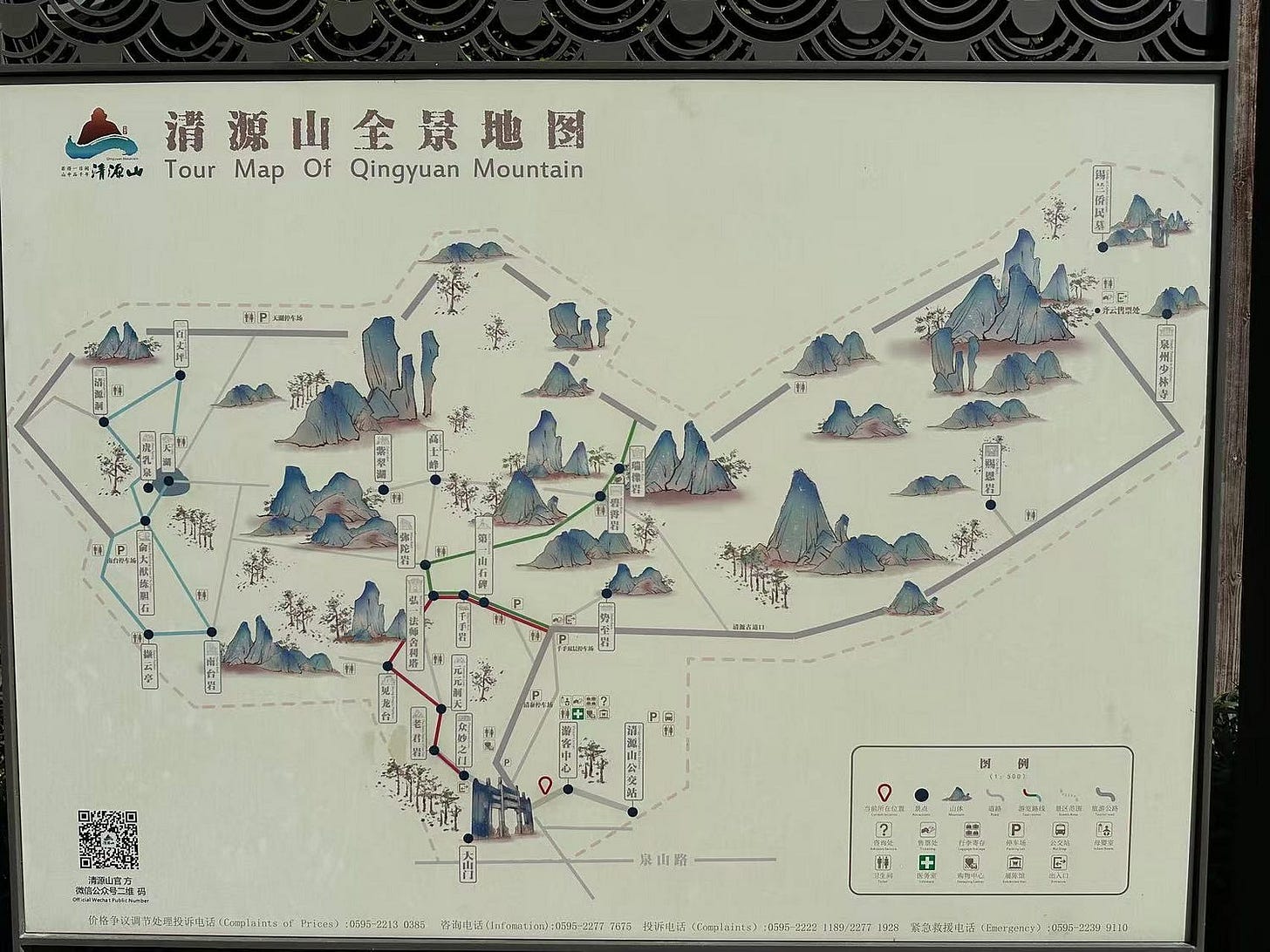
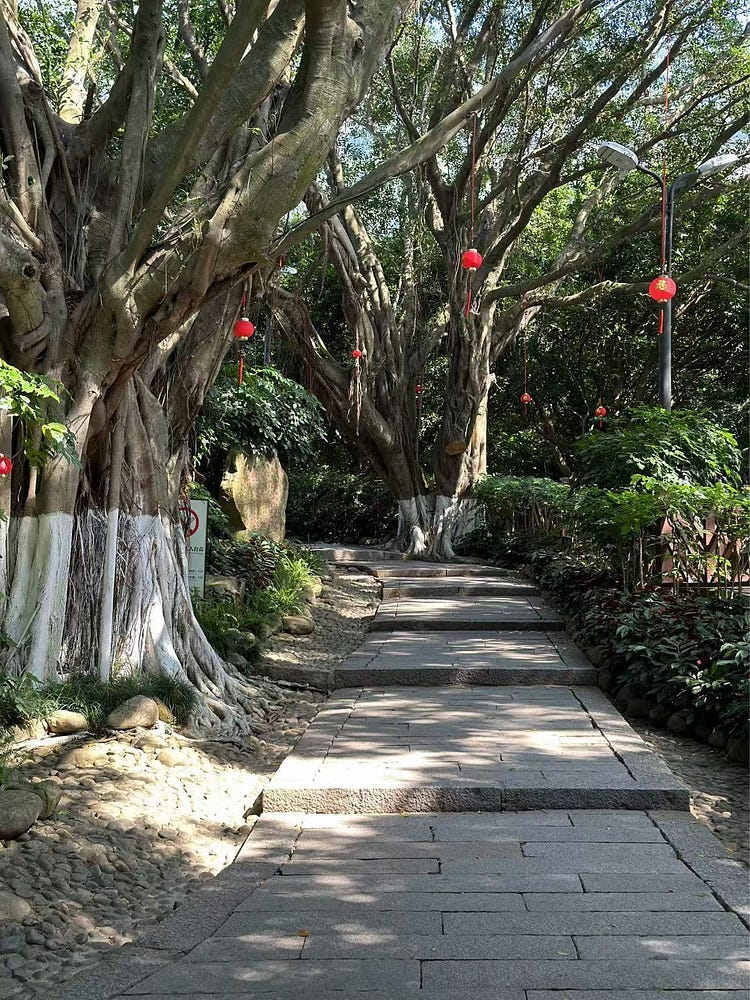
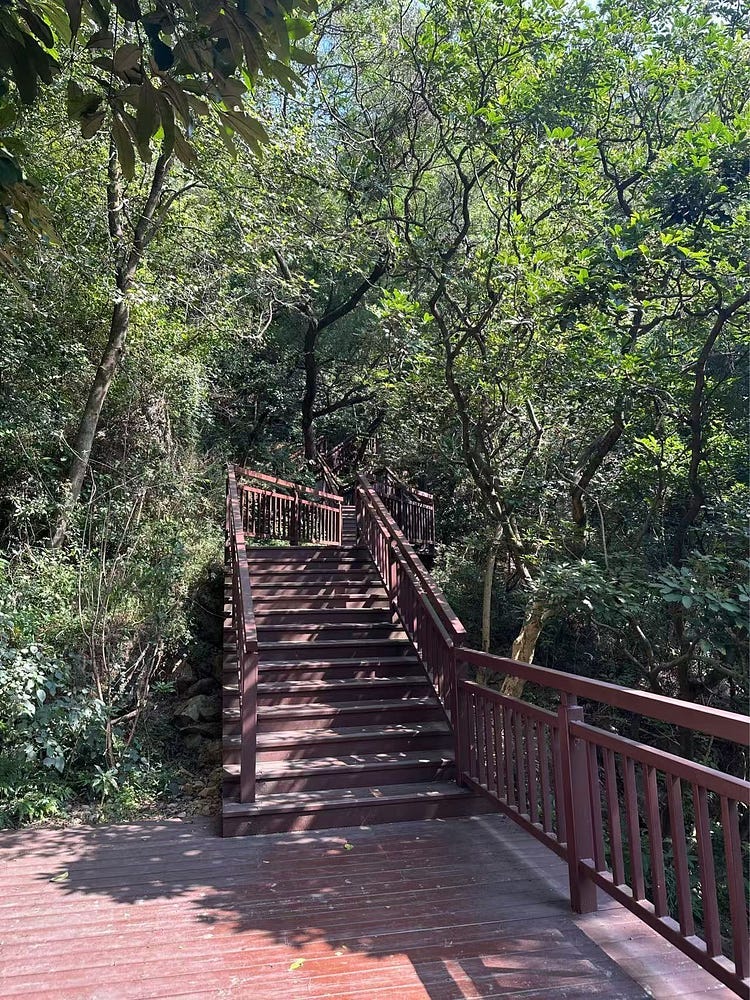
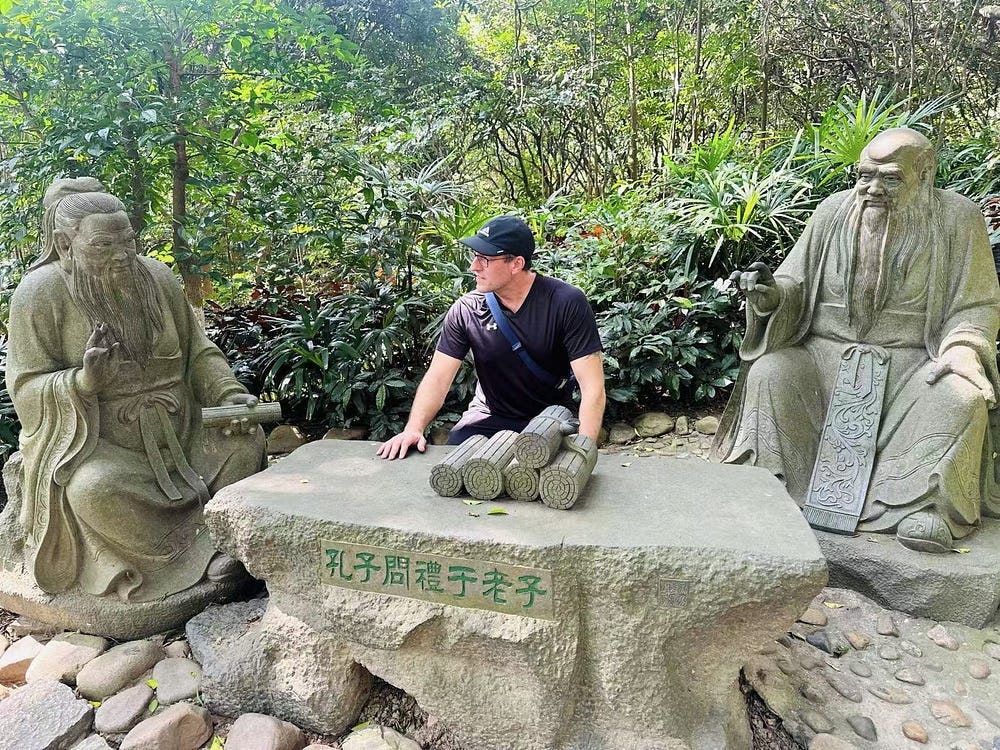
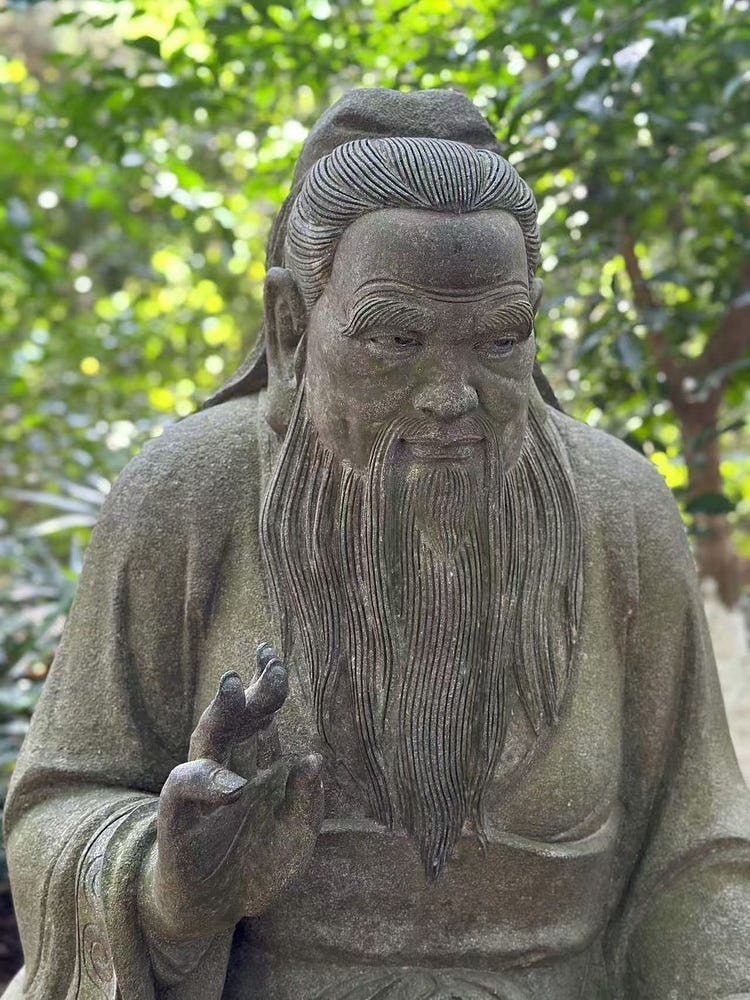
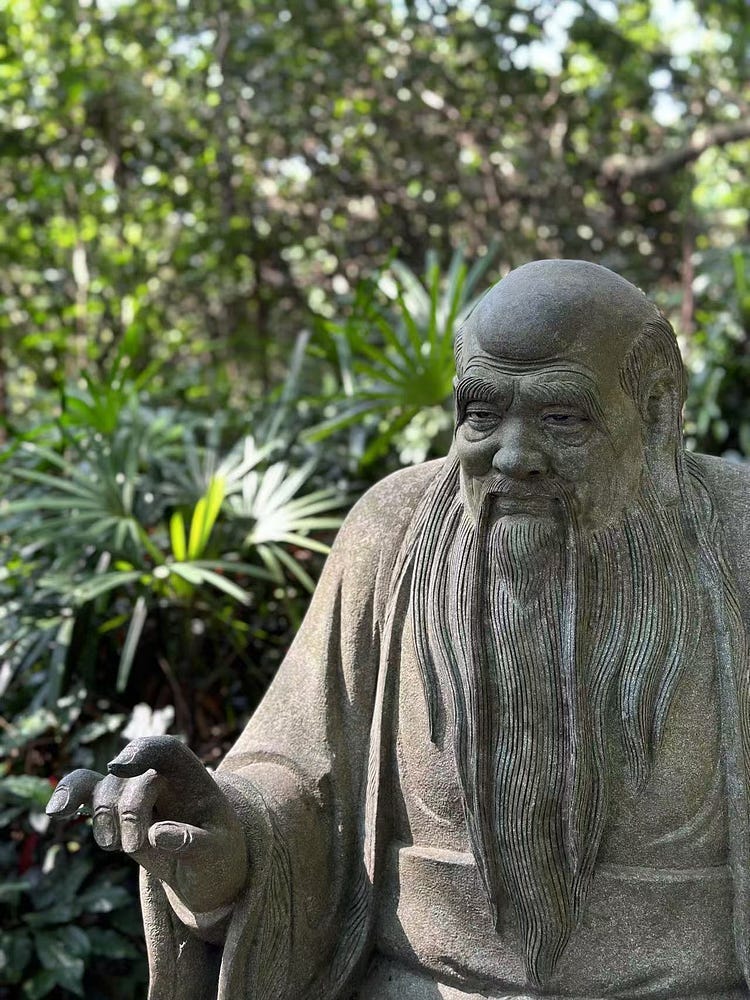
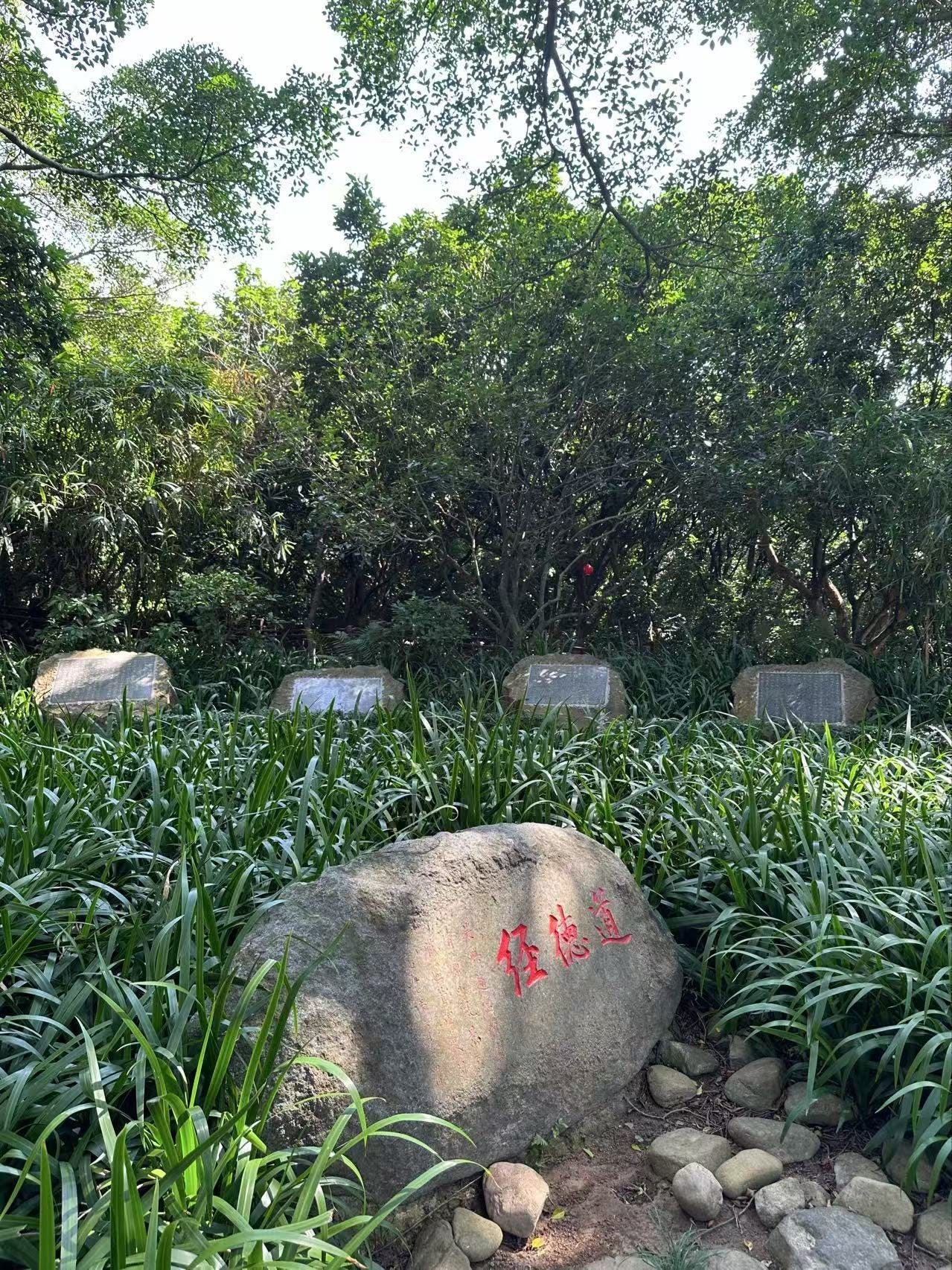
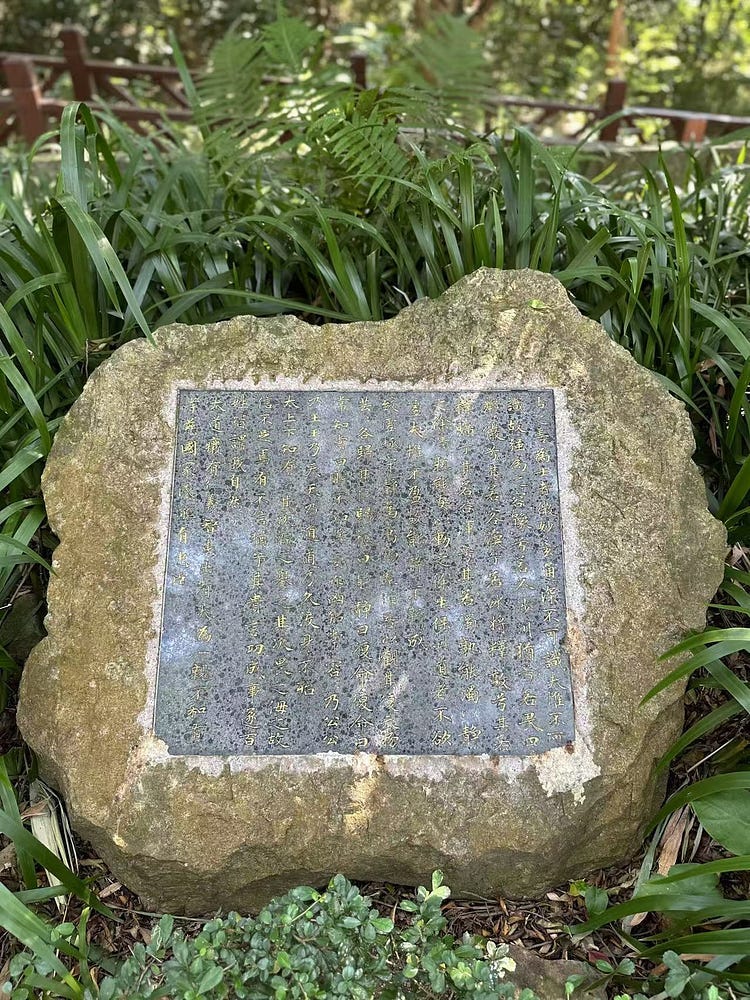
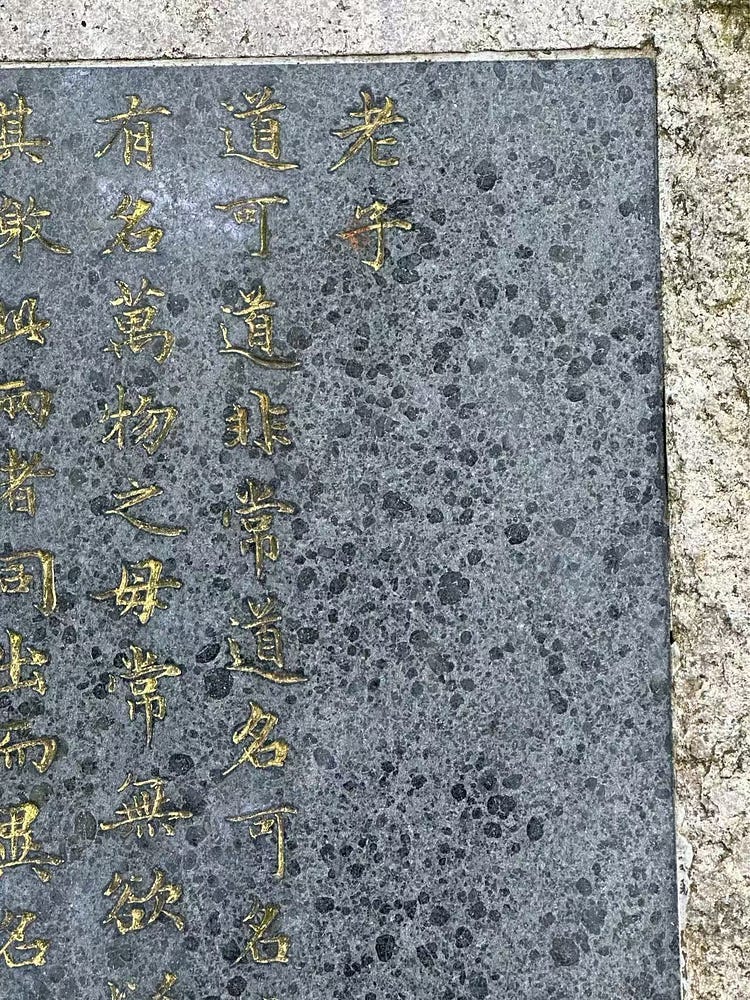

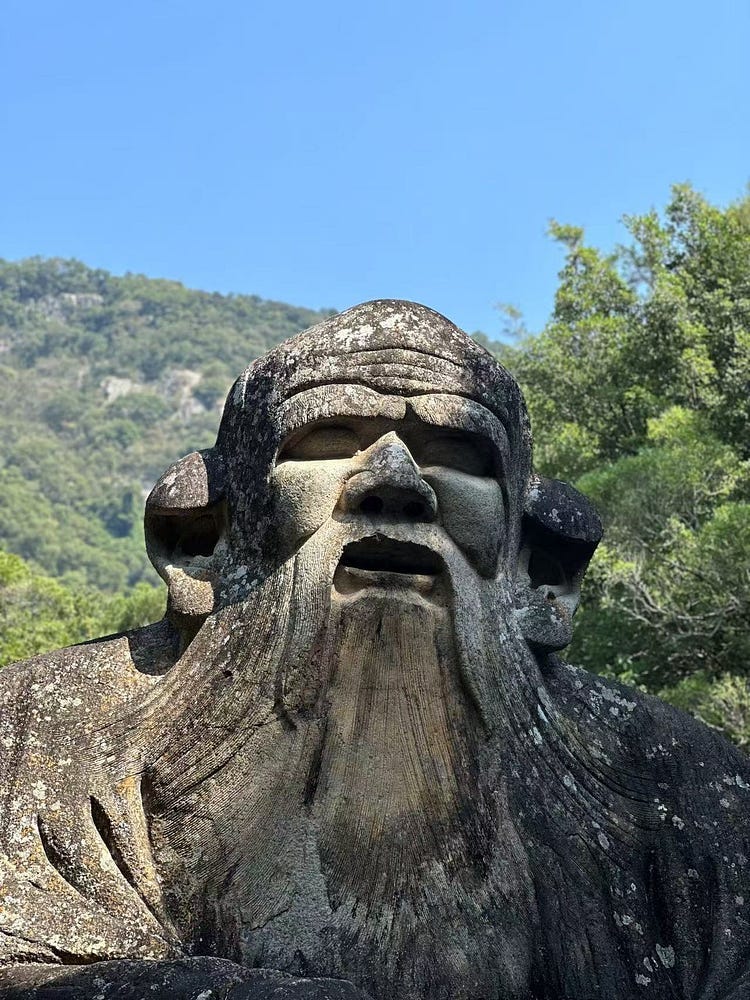

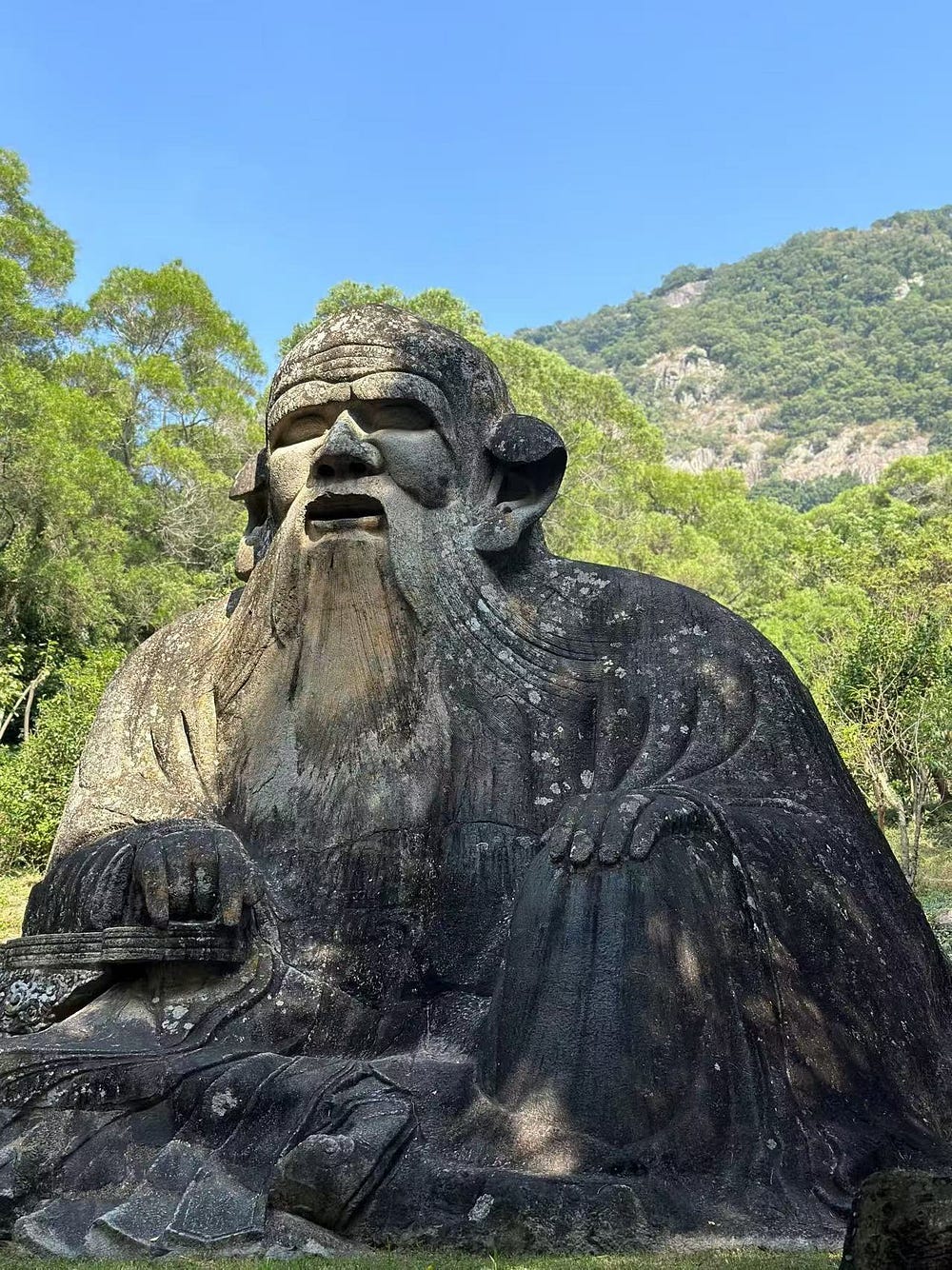
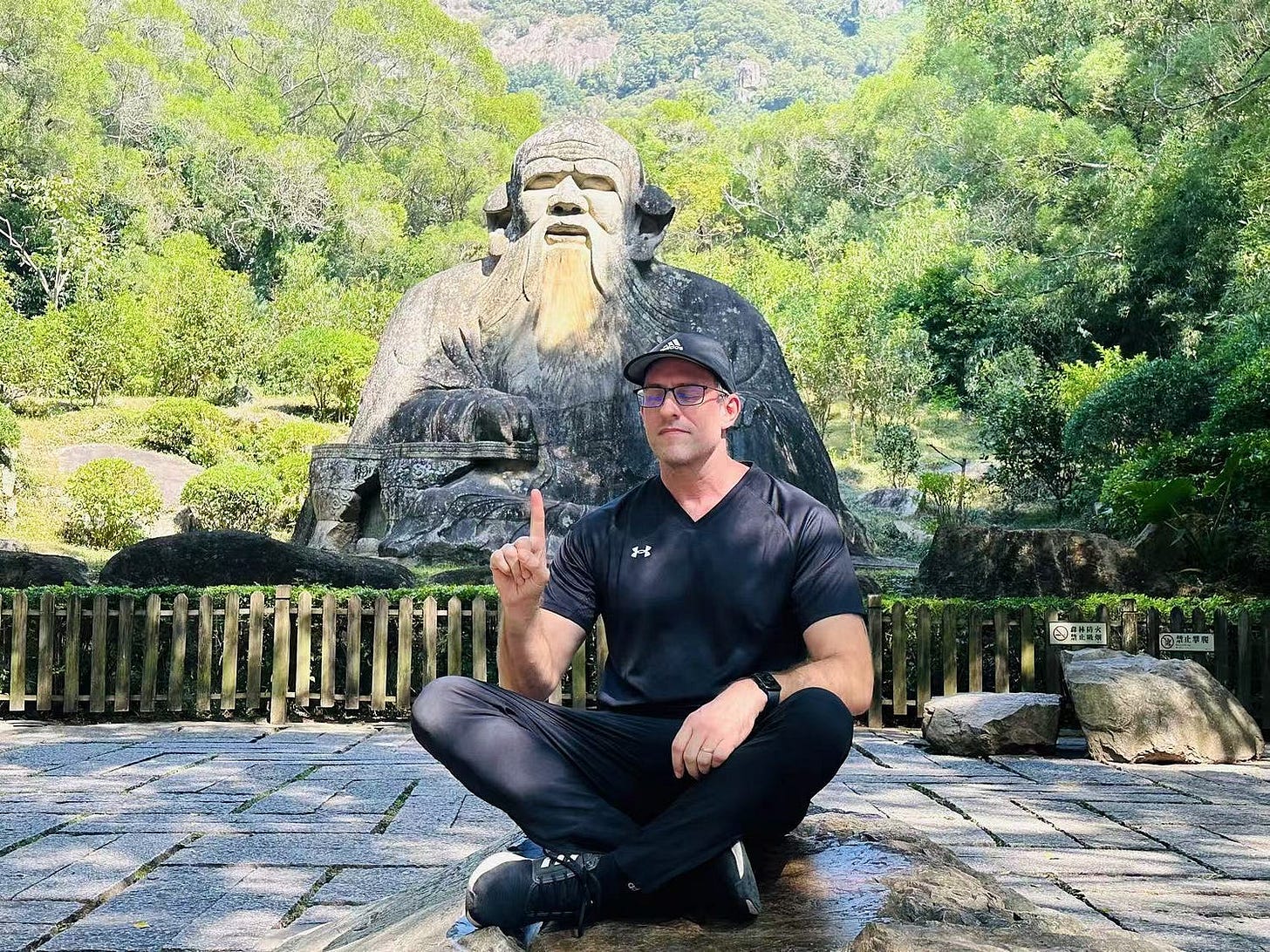
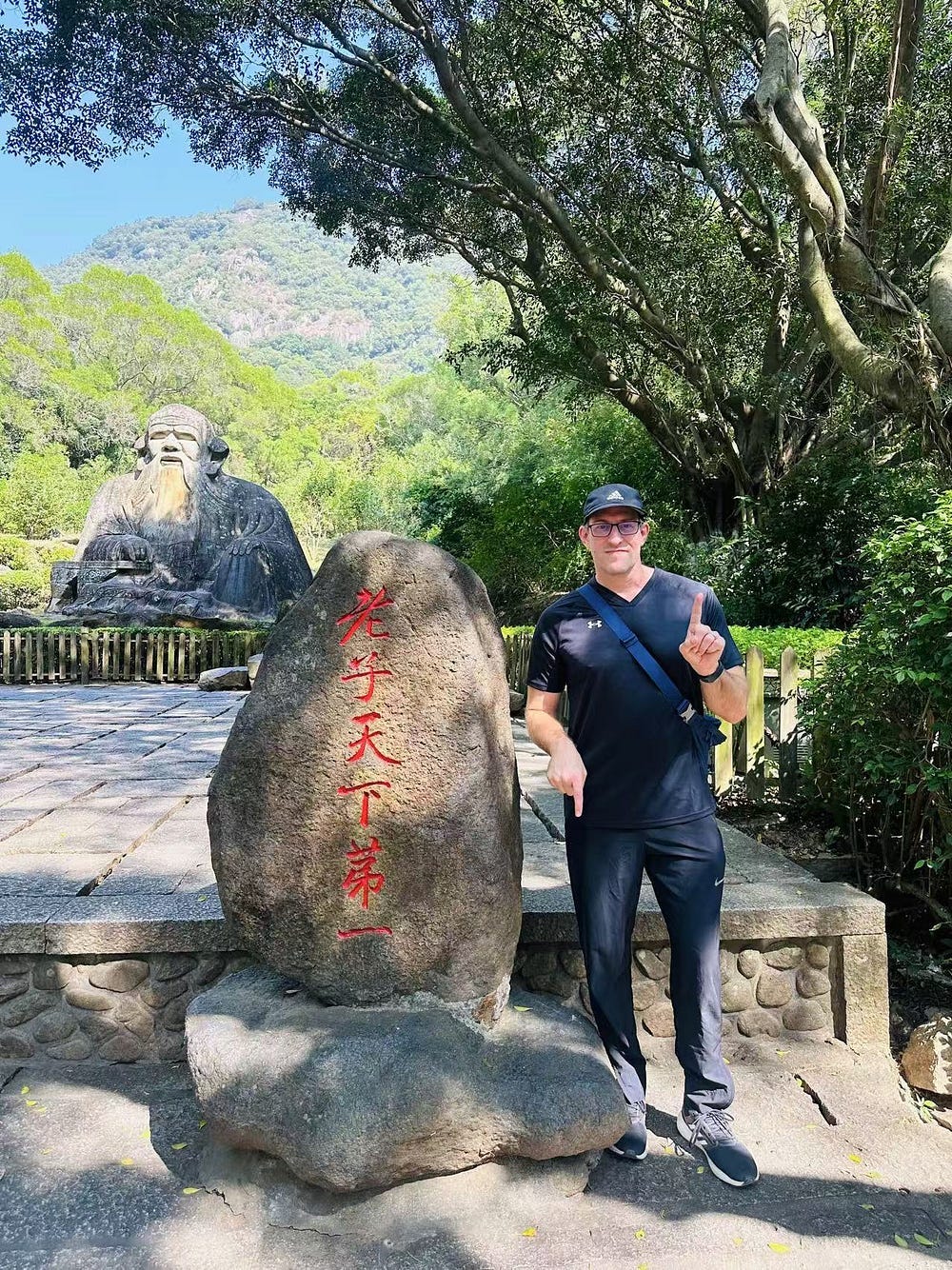

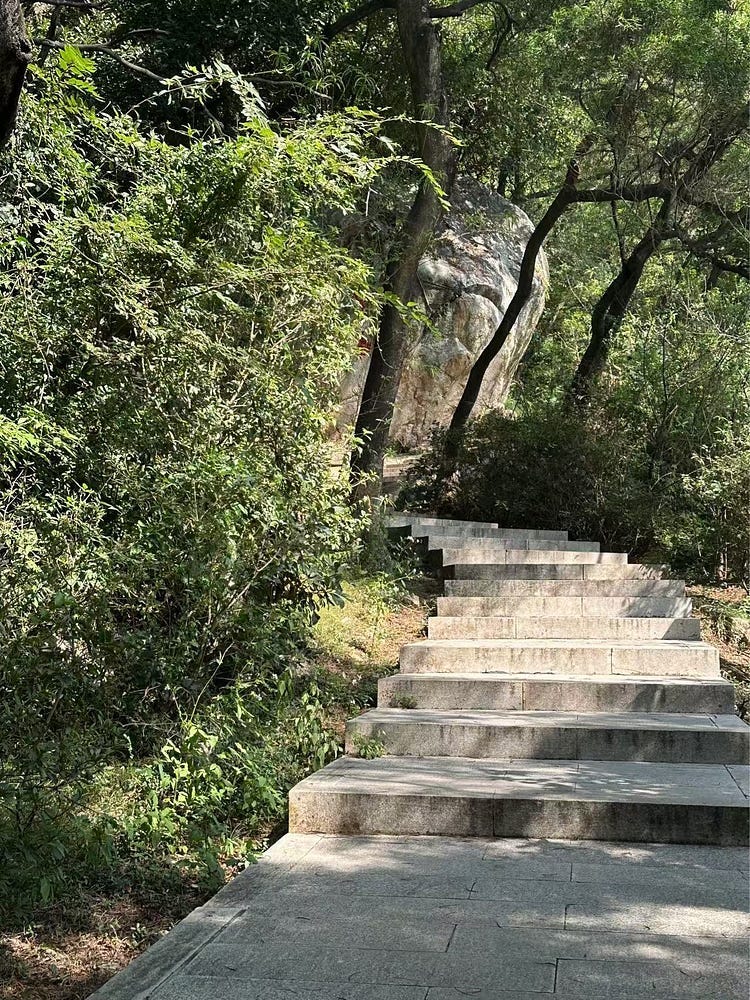
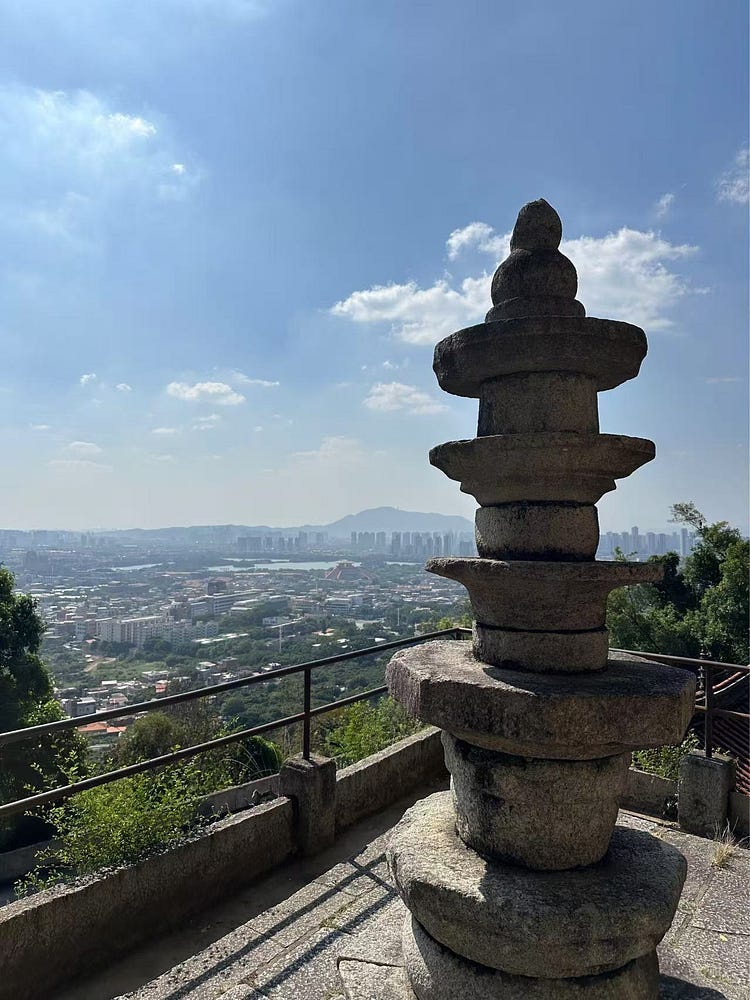

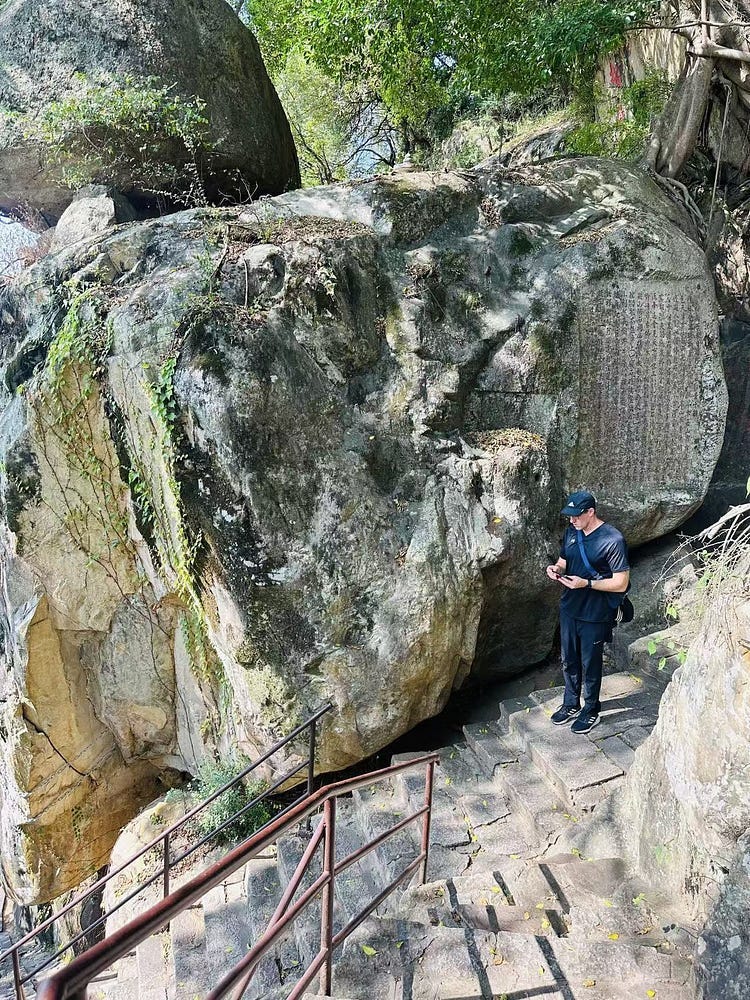
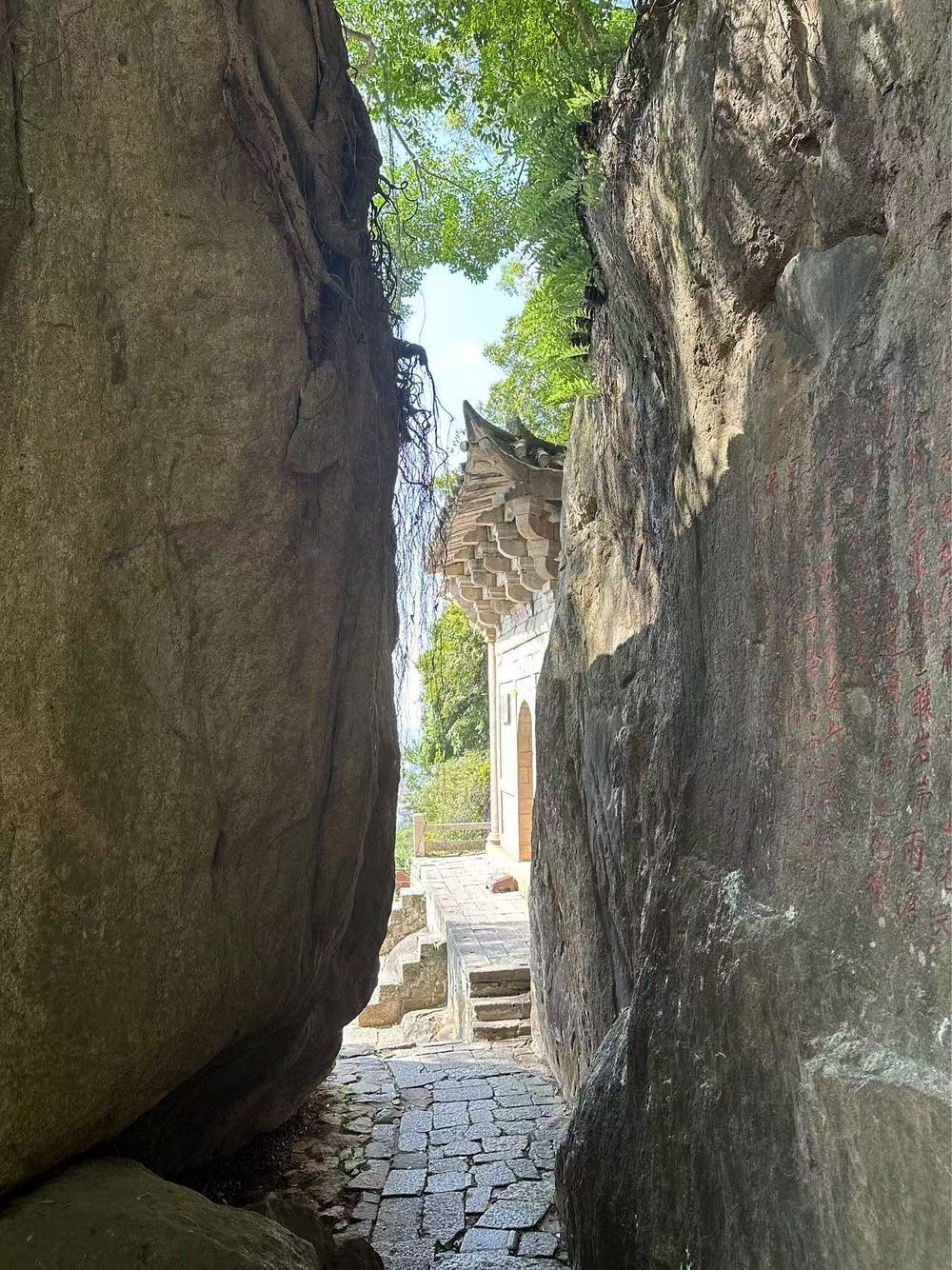
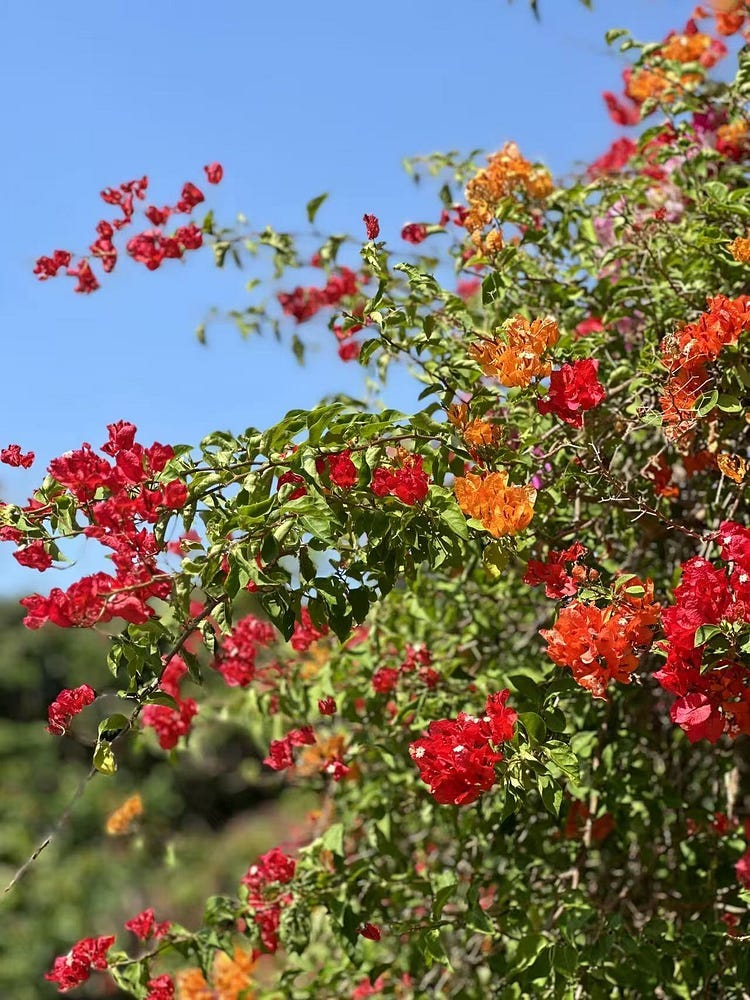
Thank you for the tour! That giant Laozi statue is pretty incredible. He's just there unbothered by the madness of man, as you said. Quite inspirational.
It looks like you'd have to stay in the area all week just explore the place in its entirety. Amazing. Great photos too!! I really enjoyed this one! 👇☝️